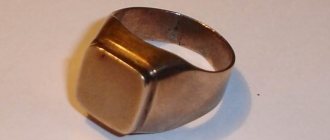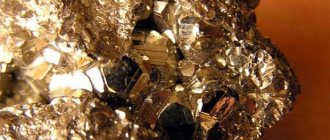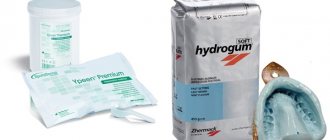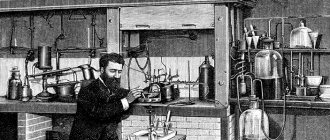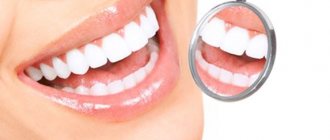What is arsenic and where is it used?
Arsenic, also known as Arsenicum in Latin, is an element of the periodic table, a semimetal. Despite the fact that it is a strong poison for the human body, arsenic also has beneficial properties, which makes it indispensable in various fields:
- agriculture (pesticides),
- deratization and disinfestation (the element is included in many pest control products),
- production of semiconductors and electronics,
- glass industry,
- metallurgy (to impart strength to alloys and increase their anti-corrosion resistance),
- woodworking (for impregnation of wooden products),
- leather and fur industry (as an antiseptic for products),
- medicine (in particular dentistry).
In nature, Arsenicum is present in certain quantities in ore deposits, mountain and earth layers, from where it can be washed out with rain into nearby bodies of water. And when using such water, poisoning is very likely. But this is not the only situation in which arsenic can cause poisoning.
Historical information.
Also on the topic:
ARSENIC AND HUMAN HEALTH
Arsenic belongs to the five “alchemical” elements discovered in the Middle Ages (surprisingly, four of them - As, Sb, Bi and P - are in the same group of the periodic table - the fifth). At the same time, arsenic compounds have been known since ancient times; they were used to produce paints and medicines. Particularly interesting is the use of arsenic in metallurgy.
Several thousand years ago, the Stone Age gave way to the Bronze Age. Bronze is an alloy of copper and tin. Historians believe that the first bronze was cast in the Tigris-Euphrates valley, somewhere between the 30th and 25th centuries. BC. In some regions, bronze with especially valuable properties was smelted - it was better cast and easier to forge. As modern scientists have found, it was a copper alloy containing from 1 to 7% arsenic and no more than 3% tin. Probably, at first, during its smelting, the rich copper ore malachite was confused with the weathering products of some also green sulfide copper-arsenic minerals. Having appreciated the remarkable properties of the alloy, the ancient craftsmen then specifically looked for arsenic minerals. For the search, we used the property of such minerals to give off a specific garlic odor when heated. However, over time, the smelting of arsenic bronze ceased. Most likely this happened due to frequent poisoning during the firing of arsenic-containing minerals.
Of course, arsenic was known in the distant past only in the form of its minerals. Thus, in Ancient China, the solid mineral realgar (sulfide with the composition As4S4, realgar in Arabic means “mine dust”) was used for stone carving, but when heated or exposed to light, it “deteriorated” as it turned into As2S3. In the 4th century. BC. Aristotle described this mineral under the name "sandarac". In the 1st century AD The Roman writer and scientist Pliny the Elder, and the Roman physician and botanist Dioscorides described the mineral orpiment (arsenic sulfide As2S3). Translated from Latin, the name of the mineral means “golden paint”: it was used as a yellow dye. In the 11th century alchemists distinguished three “varieties” of arsenic: the so-called white arsenic (As2O3 oxide), yellow arsenic (As2S3 sulfide) and red arsenic (As4S4 sulfide). White arsenic was obtained by sublimation of arsenic impurities during the roasting of copper ores containing this element. Condensing from the gas phase, arsenic oxide settled in the form of a white coating. White arsenic has been used since ancient times to kill pests, as well as...
In the 13th century Albert von Bolstedt (Albert the Great) obtained a metal-like substance by heating yellow arsenic with soap; This may have been the first example of arsenic in the form of a simple substance obtained artificially. But this substance violated the mystical “connection” of the seven known metals with the seven planets; This is probably why alchemists considered arsenic a “bastard metal.” At the same time, they discovered its property of giving copper a white color, which gave rise to calling it “a Venus (i.e. copper) bleaching agent.”
Arsenic was clearly identified as an individual substance in the mid-17th century, when the German pharmacist Johann Schroeder obtained it in a relatively pure form by reducing the oxide with charcoal. Later, the French chemist and physician Nicolas Lemery obtained arsenic by heating a mixture of its oxide with soap and potash. In the 18th century arsenic was already well known as an unusual "semi-metal". In 1775, the Swedish chemist K.V. Scheele obtained arsenic acid and gaseous arsenous hydrogen, and in 1789 A.L. Lavoisier finally recognized arsenic as an independent chemical element. In the 19th century Organic compounds containing arsenic were discovered.
Ways and methods of poisoning
There are only 3 routes of intoxication: inhalation, ingestion and skin contact. This can happen in different ways:
- in cases of murder or suicide attempts, industrial accidents,
- when living in arsenic-contaminated areas,
- inhalation of poisoned air,
- after eating seafood from contaminated waters,
- from the use of pesticides, preservatives (food), herbicides and products against insects, rodents and fungi,
- after drinking raw water,
- in direct contact with semi-metal in production,
- violation of safety regulations when working with arsenic.
In other words, you can encounter arsenic almost everywhere. But whether a person becomes poisoned or not will depend on the concentration of the poison that enters the body.
PHYSICAL PROPERTIES
| Mineral color | pewter-white, fading to dark gray or black on the surface |
| Stroke color | grey |
| Transparency | opaque |
| Shine | semi-metallic, dull |
| Cleavage | perfect by {0001} and less perfect by {0112} |
| Hardness (Mohs scale) | 3,5 |
| Kink | uneven |
| Strength | fragile |
| Density (measured) | 5.63 – 5.78 g/cm3 |
| Radioactivity (GRapi) | 0 |
Arsenic in dentistry - is it dangerous?
Not so long ago, arsenic paste was used to successfully kill the dental nerve by placing it in the cavity of an exposed diseased tooth. It was assumed that over the next 2 days the poison would reduce sensitivity to zero, the nerve would be removed, and the tooth would be healed.
It would seem that everything is very simple. But there are some nuances here: you can carry arsenic in your mouth for no longer than 2 days. After this time, a visit to the dentist must be made again to remove the paste. Because of this, the question often arises: is it possible to get poisoned by carrying arsenic paste in your mouth?
Oddly enough, many people, afraid to feel pain again, walk with arsenic in their mouth for more days than they should, in order to be sure to “finish off” the nerve. The result here can be one: the poison begins to have a destructive effect on the tooth and soft tissues, which leads to inflammation and rapid destruction of the tooth itself.
Contrary to the existing myth that a filling with arsenic can poison the body, I would like to say that this is not at all the dose of poison that could really lead to intoxication. With arsenic, dental treatment will not lead to poisoning, even if:
Read also: Tests for salmonellosis
- a dental filling containing arsenic fell out and was accidentally swallowed,
- the patient is a child,
- There was an overexposure of the arsenic filling in the mouth.
The minimum amount of arsenic in the composition of the medicinal paste is unable to poison the entire body. But since it can harm the tooth, this substance is rarely used in dentistry. Basically, unless the patient is allergic to modern local anesthetics.
And although arsenic poisoning during dental treatment is impossible, dentists themselves increasingly refuse to use the outdated method of killing the nerve in order to preserve the tooth and its soft tissues. This has been replaced by strong anesthetics that can reduce discomfort to zero, which allows you to painlessly treat the tooth and preserve it for a long time.
MORPHOLOGY
Arsenic is usually observed in the form of crusts with a sintered kidney-shaped surface, stalactites, shell-like formations, which reveal a crystalline-granular structure when fractured. Native arsenic is quite easily recognized by the shape of the deposits, blackened surface, significant specific gravity, strong metallic luster in a fresh fracture and perfect cleavage. Under the blowpipe it evaporates without melting (at a temperature of about 360°), emitting a characteristic garlic odor and forming a white As2O3 coating on the coal. It turns into a liquid state only at increased external pressure. In a closed tube it forms a mirror of arsenic. When struck sharply with a hammer, it emits a garlicky smell.
Impact on the body
So, it is impossible to be poisoned by this semi-metal during dental treatment. However, if the poison enters the body in other ways and in large quantities, serious harm is caused to health.
A lethal dose of arsenic for an adult can be 0.1 - 0.2 g of poison. Sometimes a negligible dose of 0.05 g is enough for a child.
Under the influence of arsenic (after its rapid absorption into the blood), all organs and their systems are affected. The liver, heart, lungs and kidneys are especially affected, and this happens in just a day. After 2 weeks, the substance is found in bones, nails, hair and skin. Wherein:
- biochemical processes are disrupted,
- the nervous system is affected,
- oxygen exchange in cells is disrupted,
- the substance quickly binds to hemoglobin, etc.
Removal of poison from the body during arsenic poisoning occurs with feces and urine, and with urine much faster. The remnants of the received dose are stored in tissues and organs, continuing to have a detrimental effect.
Symptoms
Signs of arsenic poisoning in acute form are quite characteristic. This specificity helps to identify the problem in time:
- temperature increase,
- thirst, dehydration,
- vomiting with nausea,
- sharp pain of varying intensity in the stomach,
- decreased diuresis,
- weakness,
- loose stools that look like rice water,
- numbness of hands and feet,
- metallic taste in the mouth,
- convulsions,
- partial loss of vision,
- the characteristic smell of garlic from the mouth of a poisoned person,
- heart failure, tachycardia, decreased blood pressure.
Read also: How to distinguish poisoning from rotavirus
These symptoms of arsenic poisoning indicate an acute form. But with constant contact with this poison (for example, when working in production where Arsenicum is used), the intoxication takes on a chronic form.
Chronic arsenic poisoning will not be immediately noticeable, but it will eventually result in very serious problems due to the growing amount of poison that gradually accumulates in the body:
- the upper layers of the skin grow and become scab-like (hyperkeratosis),
- whitish stripes appear on the nail plates of the hands and feet,
- the skin peels and flakes off even in those parts of the body that have always been protected from contact with poison,
- red spots appear on the head, chest, armpits and scrotum,
- encephalopathy and neuropathy develop,
- convulsions,
- destruction of red blood cells - hemolysis,
- toxic hepatitis,
- burns of the larynx, ulcers of the esophagus, bleeding in the gastrointestinal tract,
- renal failure with blood in urine darkened due to hemolysis,
- coma.
If acute arsenic poisoning is accompanied by symptoms that develop half an hour after taking a dose of poison, then in the chronic form, signs of intoxication can be noticed only after 0.5 - 2 months.
First aid
If you notice symptoms of poisoning, you should call an ambulance, and before it arrives you need to start providing first aid yourself:
- If a person is unconscious, then it is necessary to lay him on his side so that if vomiting occurs, he does not choke on it;
- In the absence of consciousness and signs of life, you need to independently begin performing cardiopulmonary resuscitation. It is necessary to free the oral cavity from foreign objects and vomit (if any). Stick out your tongue to prevent it from retracting. Next, an indirect cardiac massage is performed. It includes 2 breaths and 30 chest compressions. It is better to do this together;
- Flushing it with plenty of water will help remove the remaining toxins in the stomach, but if the person is conscious, this requires giving the person a large amount of water and inducing an attack of vomiting. To do this, just press on the root of the tongue. Arsenic can be removed from skin with soap and water;
- In order to avoid dehydration, it is necessary to give the patient water in small portions;
- You can use activated carbon, but with such serious poisoning it does not have much effect. You should not take laxatives.
Specialized assistance is necessary in all cases. However, with a mild degree of poisoning, hospitalization in a hospital may not be required and the patient remains in outpatient treatment. In case of moderate and severe poisoning, it is necessary to send the patient to a hospital for further treatment.
When conducting therapy in a medical institution, the following measures are taken:
- If chemical vapors are inhaled, artificial ventilation is required;
- To restore the volume of circulating blood and normalize blood pressure, a physical solution is prescribed intravenously;
- If sugar is low and hemoglobin is present in the urine, a glucose solution is used;
- For bronchospasm, Eufillin is used;
- Kidney failure is being eliminated.
How to help the victim
Although mild poisoning does not require hospital treatment, only a doctor can determine the severity of the problem. Therefore, first of all, you need to call an ambulance, and during its journey, independently help the victim:
- provide fresh air,
- give 1 glass or 1 liter of acidified water to drink (with 1 liter of vinegar or 3 g of citric acid) to cleanse the stomach,
- if there is hydrogen sulfide water in the house, give it a solution (100 ml) to neutralize the poison and transform it into a safe substance - arsenic sulfide,
- give sorbents (any except activated carbon, which is useless in this situation),
- in case of dehydration, unsolder the victim little by little, but often,
- If a toxic substance gets on your skin, wash it off with soapy water.
It is unlikely that in any home there will be drugs for every occasion, much less antidotes against arsenic. Therefore, all other actions will be carried out by doctors.
Treatment in hospital
If the poisoning is determined to be severe, the patient will be transported to the department. There, under medical supervision, he will receive the necessary treatment:
Read also: Mold poisoning in humans
- Antidotes. The introduction of an antidote is a necessary step in the treatment of poisoning. In case of acute arsenic intoxication, Unithiol will play this role as the main antidote. It neutralizes the poison, turning it into a safe compound, and removes it from the body along with urine. It is administered intravenously (injection or dropper) or intramuscularly. In the chronic form, D-penicillamine is used as an antidote - one gram orally 4 times a day.
- Oxygen. Inhalations with it are indicated for arsenic vapor poisoning.
- Atropine + morphine. They are administered by injection if pain in the stomach persists.
- Hemodialysis, blood transfusion, increased diuresis. They are carried out selectively depending on how badly the kidneys are damaged.
- Novocaine + glucose in the presence of blood in the urine.
- Calcium chloride (or saline + glucose + adrenaline) to maintain blood pressure and maintain fluid volume in the body.
Treatment after severe poisoning can last up to 2 years. Therefore, after an inpatient course, it is necessary to adhere to rehabilitation standards: do not violate the drinking regime, take baths with alkalis, follow the prescribed diet, and continue vitamin therapy.
ORIGIN
Arsenic occurs in hydrothermal deposits as metacolloidal formations in voids, apparently formed during the last moments of hydrothermal activity. In association with it, arsenic, antimonous, and, less commonly, sulfur compounds of nickel, cobalt, silver, lead, etc., of various compositions, as well as non-metallic minerals, can be found.
In the literature there are indications of the secondary origin of arsenic in weathering zones of arsenic ore deposits, which, generally speaking, is unlikely, given that under these conditions it is very unstable and, quickly oxidizing, decomposes completely. The black crusts consist of a fine mixture of arsenic and arsenolite (As2O3). Eventually pure arsenolite is formed.
In the earth's crust, the concentration of arsenic is low and amounts to 1.5 ppm. It is found in soil and minerals and can be released into the air, water and soil through wind and water erosion. In addition, the element enters the atmosphere from other sources. As a result of volcanic eruptions, about 3 thousand tons of arsenic are released into the air per year, microorganisms produce 20 thousand tons of volatile methylarsine per year, and as a result of the combustion of fossil fuels, 80 thousand tons are released over the same period.
On the territory of the USSR, native arsenic was found in several deposits. Of these, we note the Sadon hydrothermal lead-zinc deposit, where it was repeatedly observed in the form of kidney-shaped masses on crystalline calcite with galena and sphalerite. Large kidney-shaped accumulations of native arsenic with a concentric shell-like structure were found on the left bank of the river. Chikoya (Transbaikalia). In paragenesis with it, only calcite was observed in the form of rims on the walls of thin veins cutting across ancient crystalline schists. In the form of fragments (Fig. 76), arsenic was also found in the area of st. Jalinda, Amurskaya railway etc. and in other places.
In a number of deposits in Saxony (Freiberg, Schneeberg, Annaberg, etc.), native arsenic was observed in association with arsenic compounds of cobalt, nickel, silver, native bismuth, etc. All these and other finds of this mineral are of no practical significance.
Consequences
Severe poisoning often affects the body quite seriously, leaving behind additional health problems. After a strong (or long-term) toxic effect of arsenic (even after high-quality treatment), the following may appear:
- polyneuritis,
- decreased immunity with subsequent manifestation of existing chronic diseases,
- failure of the liver, lungs, kidneys, heart,
- headaches after exposure to the central nervous system (mainly felt in the back of the head, forehead and temples).
The consequences of poisoning in children are especially severe: they experience disturbances in speech, hearing and coordination of movements.
Arsenic is a strong carcinogen that, after poisoning, can cause cancer of the prostate, lung, kidney, bladder or liver.
Prevention
Since arsenic is a poison that can cause not only disability, but also death, compliance with preventive measures is extremely important.
To protect yourself and others from the harmful effects of arsenic, it is enough to follow simple rules:
- in production, observe all necessary safety measures (protective uniform, neatness, etc.),
- do not shy away from undergoing medical examinations,
- do not drink raw water,
- do not buy products secondhand from strangers,
- Do not store substances containing arsenic in the house.
But if, nevertheless, it was not possible to avoid poisoning for some reason, the main thing is to remember the need to immediately call a doctor. You will not be able to determine the severity of intoxication on your own or completely remove the poison from the body.



